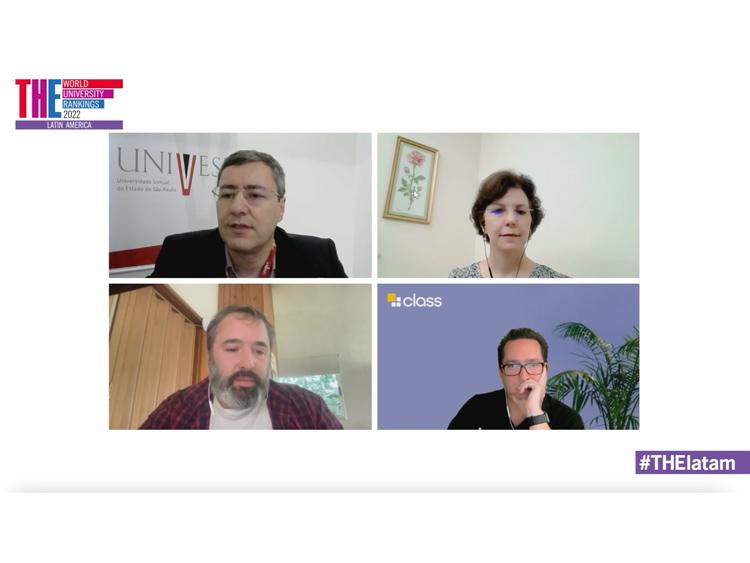The Latin American higher education system had many of the same experiences as the rest of the world during the Covid-19 pandemic. Universities faced similar challenges in deciding how best to sustain teaching and learning while campuses were shut. But not all were affected equally.
At the Times Higher Education Latin America Universities Forum, delegates convened for a discussion, hosted in partnership with Class Technologies, on the sector’s post-Covid future and the lessons to be taken from the pandemic.
There was a consensus that the institutions that had implemented digital strategies long before 2020 still faced steep learning curves but were ultimately better prepared to maintain academic continuity. Furthermore, the sector was at a turning point in its digital transformation, in which hyflex learning could augment teaching and learning to enhance the student experience and graduate employability.
At Tecnológico de Monterrey, teaching and learning was up and running within a week, but 30 years of digital learning experience had prepared the university for the transition. In August 2018, it organised its digital transformation around the four pillars of its Tec21 programme: challenge-based learning, flexibility, inspiring faculty and memorable college experience. Its director of strategic planning, Silvia Farías-Gaytán, said it has transformed the student experience and urged universities to be bold with their digital evolution.
“It will allow our students to solve real challenges,” Farías-Gaytán said. “Interacting with training partners, with companies and organisations, they will be able to choose the learning path for their needs. Also, we launched an institutional process for educational innovation, which lets us incorporate more innovations to our educational model in a structured way, and to develop innovative projects that help change our learning process.
New modes of learning place challenges on academic staff. Throughout the digital transformation process, it is vital that faculty members are given the resources and support to design and deliver their teaching.
Jorge Salinas, director of solutions engineering (international) at Class Technologies, said that educators require a different set of skills to transform the way they teach. “It is not just about speaking in front of a camera; it is about creating an experience for students and being more inclusive, and making students part of that learning experience,” Salinas said.
Digital tools were widening access to higher education and allowing universities to reach more students. This enhanced access is vital for a public institution such as the Technological University of Uruguay (UTEC), which teaches across 11 locations and serves a student body in which 84 per cent of its cohort are first-generation university students.
Juan Marrero, director of the Center for Digital Transformation at UTEC, spoke of the importance of digital governance and digital literacy. He said one of the key lessons to be taken from the pandemic was that even labs – and teaching that would traditionally be delivered in person– could be delivered remotely.
“What we realised here was you can digitalise everything on the course,” Marrero said. “But what really matters is identifying which competences the student can acquire or develop from the virtual or the digital learning, and which competences [they] can acquire from face to face.”
The panel:
- Rodolfo Azevedo, president, São Paulo State Virtual University (chair)
- Silvia Farías-Gaytán, director of strategic planning, Tecnológico de Monterrey
- Juan Marrero, director, Center for Digital Transformation, Technological University of Uruguay
- Jorge Salinas, director of solutions engineering (international), Class Technologies
Watch the webinar on demand above or on the THE Connect YouTube channel.
Find out more about Class.


comment